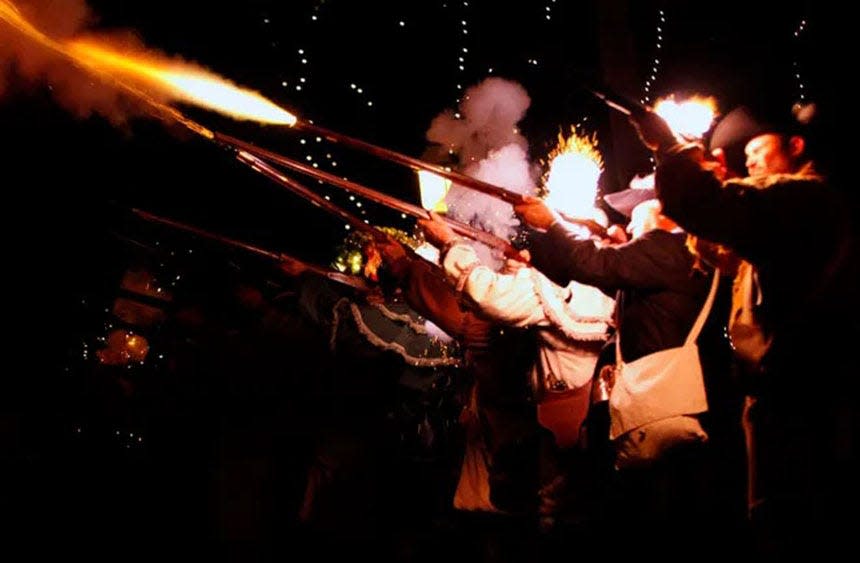Night Watch in St. Augustine has grown over the years | SUSAN PARKER
The St. Augustine Colonial Night Watch is Saturday, Dec. 3. How the Night Watch event has grown!
The first one took place in 1975, not long before Christmas. As the United States readied to observe its 200th birthday in 1976, St. Augustine took the opportunity to tout its years as a British town (1763-1784). The Night Watch arose out of a focus on British St. Augustine.
Some of my remarks here come from my memory, no notes nor diary. The old says is that "the palest ink is clearer than the fondest memory." Thus there is plenty of opportunity for me to mix up or blend what took place.

Nights of Lights and more: The best Christmas and winter holiday events in St. Augustine
From 2014: St. Augustine traditionally celebrates Grand Illumination and British Night Watch
There were few people in that first procession in 1975. In the old town, residents saw the glimmer of torches and candles pass by on the streets. The costumed re-enactors and other marchers ended the procession to enjoy food and drink at the Isabella Garden, across from today's Columbia Restaurant. Others soon joined them.
Curiosity about the nearby noises from the Isabella Garden drew me out to my balcony at my house on Spanish Street. I had heard something about a night-time procession being planned. From the balcony that cool night I could see people mingling after the parade.
I was not going to miss this. I picked up my not-quite-3-year-old daughter, who was in her quilted bedtime robe. I told my first-grader son to put on some shoes, and that a jacket would serve to hide his pajamas. And we were out the door. He and I reminisced a few days ago about that evening. He recalls drinking warm cider and eating powdered tea cookies while admiring the "soldiers."
The torchlight processions continued to take place. In their early days everyone could join in the procession. Often we were marching in between the rows of costumed soldiers. We carried lanterns and candles. I remember one woman with a candle who marched too close behind me and burned the ends of my waist-length hair.

Free events: Best Christmas and winter holiday events in Jacksonville, St. Augustine
St. Augustine has been a city of processions for centuries. Colonial officials in the 1600s, 1700s and 1800s wrote detailed descriptions of parades that honored the coronations of new kings, royal weddings and other national events. These processions usually circled around the city. If it were a night parade, homes along the parade's path would have candles in windows.
Hundreds of years ago the march began at the Plaza in front of the Governor's House. There often were proclamations read, weapon salutes and cheers before the start. Then the line of march, with colonial officials in ranked order, headed south on St. George Street to St. Francis Street. The parade stopped at the St. Francis Barracks (Florida National Guard Headquarters.) There, another round of proclamations, weapon salutes and cheers took place. The marchers then headed north on Charlotte Street to the area near the City Gate and repeated the proclamation, firing of weapons and cheering.
Then they returned to the Plaza. Afterward the Governor often hosted a reception and might toss goodies from the balcony on the Governor's House. The crowd below, no doubt, hoped that the governor would toss coins.

As the torchlight parades of the late 1900s and early 2000s grew in popularity, so did the need for organization and control of the procession. The general public's impromptu joining the march was ended. The parades were no longer just local events. More and more spectators came to St. Augustine to see the torchlight parades. No longer just a procession, events were added to fill a weekend.
History is often called the study of change and the Night Watch has changed. It is a big and grand event. Yet for me, the change is a metaphor for Life. Watching from the sidelines is not so enjoyable once you've walked along in the procession — even if you do get your hair singed.
Susan R. Parker holds a doctorate in colonial history.
This article originally appeared on St. Augustine Record: SUSAN PARKER | St. Augustine's Night Watch procession attracts crowds

